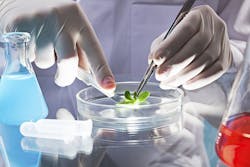Pharma News: MIT designs fast, compact pharmaceutical protoype
MIT designs fast, compact pharmaceutical prototype
A compact prototype machine from Massachusetts Institute of Technology produces pharmaceutical pills more quickly than traditional factories.
It can generate 1,000 pills in 24 hours in the device around the size of a residential refrigerator.
Funding for the project has come from the Department of Defense, who would use the devise for field hospitals for military personnel and hard-to-reach areas where diseases break out. It could also enable pharmacies and hospital to make their own pills as needed, which would increase competition in the market.
Bayer, Monsanto discuss potential merger
German chemical and pharmaceutical group Bayer made a $62 billion cash offer for agrochemical company Monsanto. Monsanto rejected that offer but said it remains open to further deal talks.
The deal would have created the world’s largest agriculture business, benefiting from Monsanto’s leadership in Seeds & Traits and Bayer’s broad Crop Protection product line, the German company said in a statement. Initially, Bayer expects annual earnings contributions from total synergies of approximately $1.5 billion after year three plus further integrated offer benefits in future years.
Bayer’s offer for Monsanto was the biggest takeover ever attempted by a German company, and also ranks as the largest ever cash offer for a single company.
Pharmaceuticals widespread in small streams in the Southeast
Discharges from wastewater treatment plants are not the only source of pharmaceuticals in streams in the southeastern United States, according to a new study by the U.S. Geological Survey (USGS).
Scientists sampled 59 small streams in areas of Alabama, Georgia, North Carolina, South Carolina and Virginia, and analyzed the samples for 108 different pharmaceutical compounds.
They detected at least one pharmaceutical chemical in all 59 streams, while the average number of pharmaceuticals detected in the streams was six.
Reporting on the findings, USGS noted that previous research pointed to wastewater treatment facility discharges as the most likely source for pharmaceutical chemicals in surface water. However, only 17 of the 59 streams in the latest study have any reported wastewater discharges. None of the chemicals exceeded human health benchmarks.
The results of the study have been published in the journal Environmental Science and Technology Letters.
